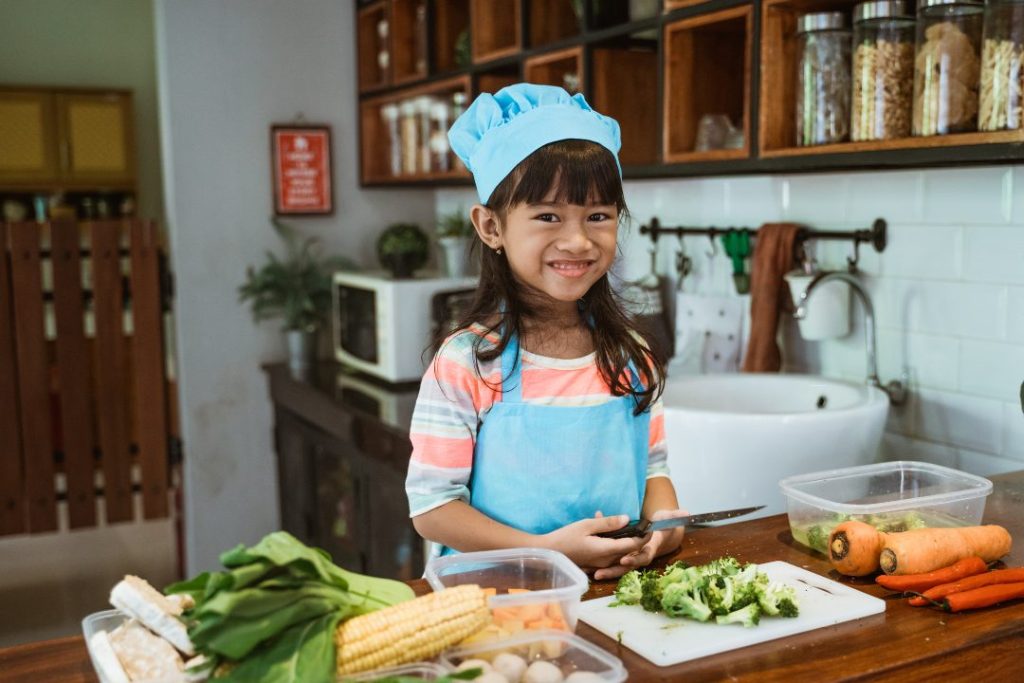
Creating a Kid-Friendly Kitchen: Tips for Safety and Accessibility
- Lutful Ahmed
- August 23, 2024
- 7:39 pm
- No Comments
Designing a kitchen that’s safe and accessible for children can turn cooking into a fun, educational, and enjoyable experience. Whether you’re looking to involve your kids in meal preparation or simply want to make the kitchen a more inclusive space, here are some essential tips to create a kid-friendly kitchen that prioritizes safety and accessibility.
1. Prioritize Safety
Childproofing: Begin by childproofing your kitchen to prevent accidents. Install cabinet locks or latches to keep harmful substances out of reach, and ensure sharp objects like knives are stored safely.
Safety Covers: Use safety covers on electrical outlets and keep appliances with sharp edges or hot surfaces out of reach. Consider installing stove knob covers to prevent accidental use.
Non-Slip Mats: Place non-slip mats in areas where kids may stand, especially near the sink and stove, to reduce the risk of slips and falls.
2. Create Accessible Spaces
Child-Sized Tools: Provide child-sized kitchen tools and utensils that are safe and easy for kids to handle. Look for plastic knives, lightweight mixing bowls, and sturdy but easy-to-hold utensils.
Adjustable Shelving: Use adjustable shelving or pull-out drawers to ensure that frequently used items are within reach of children. Low, accessible shelves can help kids retrieve ingredients and utensils easily.
Step Stools: Invest in a stable, adjustable step stool that allows kids to reach the counter safely. Ensure it has non-slip feet to provide stability.
3. Organize for Ease
Clear Containers: Store ingredients in clear, labeled containers to make it easier for kids to find what they need. Use child-friendly labels or pictures for younger children who may not yet read.
Designated Areas: Create specific areas for kids to work on their cooking projects. A small, child-height counter or table can be a great addition to the kitchen setup.
Easy Access to Basics: Keep frequently used items like measuring cups, mixing spoons, and baking sheets within easy reach. Consider using a designated drawer or caddy to organize these tools.
4. Teach and Supervise
Basic Cooking Skills: Teach kids basic cooking skills, such as measuring ingredients, mixing, and using child-safe utensils. Supervise them closely to ensure they follow safety practices and understand the proper use of kitchen tools.
Safety Rules: Establish and explain safety rules, such as washing hands before handling food, using oven mitts when handling hot items, and never touching the stove without adult supervision.
5. Incorporate Fun Elements
Creative Aprons: Provide colorful, child-sized aprons to make cooking more fun. Personalized aprons or ones featuring favorite characters can make the experience more enjoyable.
Interactive Recipes: Use simple, interactive recipes that engage kids and make cooking a fun learning experience. Recipes with steps they can help with, such as stirring or decorating, are ideal.
Cooking Challenges: Introduce cooking challenges or themed cooking days to make the kitchen experience exciting. For example, have a “decorate your own cupcake” day or a “make your favorite snack” challenge.
6. Ensure Clean-Up is Simple
Accessible Cleaning Supplies: Provide child-friendly cleaning supplies, such as small sponges and dishcloths, that are easy for kids to use. Teach them how to clean up spills and wash dishes safely.
Storage Solutions: Use clear bins or baskets to organize cleaning supplies and make them easily accessible for kids. Encourage them to help with tidying up as part of the cooking process.
7. Promote Good Habits
Healthy Eating: Involve kids in preparing healthy meals and snacks to promote good eating habits. Let them choose fruits and vegetables to include in their dishes.
Hygiene Practices: Teach kids proper kitchen hygiene, such as washing fruits and vegetables, and cleaning surfaces before and after cooking.
Conclusion
Creating a kid-friendly kitchen involves thoughtful planning and attention to safety and accessibility. By childproofing the space, providing appropriate tools, and organizing the kitchen for ease of use, you can make cooking a fun and educational activity for children. With a safe and accessible kitchen, kids can enjoy cooking experiences that foster independence, creativity, and a love for healthy food.
